Description of the consortium partners
- Spanish National Research Council (CSIC)
Institute for Instrumentation in Molecular Imaging (I3M)
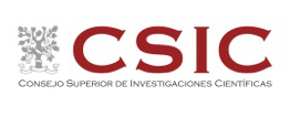
(CSIC-I3M). The Spanish Council for Scientific Research (CSIC), was founded in 1939 and is the most important organization for research in Spain with a network of 116 Institutes and 10 service centres. The total scientific staff (civil servants and postdoctoral researchers) is 3148 members. During year 2004, CSIC participated in 188 priority projects of the 6th Framework Program (22% in health sciences), 22 of them as coordinator. During that year, CSIC published 6458 articles in SCI/SSCI-listed journals, 554 doctoral thesis and applied for 177 international patents (47% of the public sector in Spain). The total budget is 700,8 Million euros with 38,48% of external financing. CSIC has an office in Brussels for European projects and an office for Technology Transfer in Madrid.
- Karolinska Institute
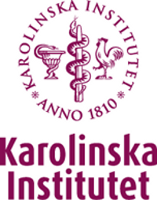
Karolinska institutet (KI) is one of the top Medical Universities in Europe. KI is devoted to Resarch and Education, hosting the largest Faculty of Medicine in Sweden. Neuroscience is one of the Research areas of Excellence at KI. The KI-PET Centre belongs to the Department of Clinical Neuroscience and its clinical research activity is within the Centre for Psychiatry Research, being part of of the Stockholm County Health Care and covering R&D in a catchment area of 2 million people. At a national level, the KI-PET Centre is part of several consortia such as the Stockholm Brain Institute and the Swedish Brain Power.
- TUM-MED
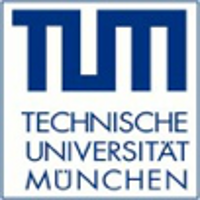
The Department of Nuclear Medicine at TUM offers all modern clinical and preclinical nuclear medicine examinations. The hospital has a long tradition. Molecular imaging of neuropsychiatric disoders is a major focus at TUM. Beside neurosciences, there are research programs in oncology and cardiology. The interdisciplinary research team consists of physicists, radiopharmacists, engineers, biologists, and clinicians.
Capacity and resources: clinical imaging infrastructure includes SPECT, SPECT/CT, PET/CT and PET/MR, fully equipped small-animal-imaging Lab (PET/CT, SPECT/CT, 7T MRI, optical imaging), state-of-the-art laboratories for in vivo, ex vivo and in vitro experiements. Radiopharmacy facilities include a cyclotron (GE PETrace) and a GMP production site (12 hot cells).
- BENCAR

BENCAR has developed a mini-clean room concept in order to meet the regulatory requirements for tracer production of compounds labelled with short-lived PET or SPECT tracers for diagnostic applications and with a potential to be used also in preparation of therapeutic radiolabelled compounds. The new mini clean room is small and is part of an integrated system based on a new microfluidic platform technology.
In the phase of developing cGMP tracer production BEN has focused on setting up a system integrating a commercial 68Ge/68Ga-generator with the micro-fluidic cassette where the tracer is produce within the mini-clean room. The production of 68Ga DOTA-Tate has been selected as BEN PET-tracer to show the usefulness of this integrated concept. In this specific project, the imaging biomarkers of interest for breast imaging will be produced with a similar approach yet aiming for different biological targets than the one actually routinely used, as they showed poor sensitivity.
- Oncovision
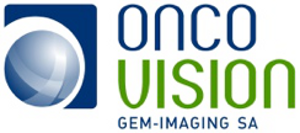
Oncovision is a Spanish technologic start-up company created in 2003 with the initiative of the Corpuscular Physics Institute (CSIC) and the University of Valencia, specialized in Molecular Vision applied to Health Sciences focusing in: cancer diagnosis and treatment, and advanced research in neurology, oncology and cardiology. OCV creates, develops and markets new medical technologies, global innovations with relevant clinical and economic advantages, often representing a breakthrough in current standards of diagnosis and treatment. Its original, fresh technology, strong intellectual property, top level clinical evidence, leading global reference centres, and pioneering protocols, is supported by its dynamic cross-functional team. Spanish and European prestigious institutions have recognized the team and the company’s technologies. In 2007, the company was selected as one of the “20 Best Technologic Companies in Spain” and won the “National Medical Physics 2007 Congress Award” In 2008; it was one of the “20 Best Health Technology Companies in Europe” by the prestigious European Technology Tour. Scientists, technicians and technologists of OCV have dozens of publications and presentations at scientific and medical conferences worldwide.
- SensL Technologies Ltd.

SensL, headquartered in Cork, Ireland, was established in 2004 as a spin out of the Tyndall National Institute in Cork. It currently employs a team of 20 people in engineering, design, operations, sales and marketing. Production of SensL’s products is outsourced with commercial foundries who run dedicated silicon processes developed by SensL’s engineers.
SensL’s strategic goal is to replace the Photomultiplier Tube, or PMT, with a higher performance Silicon Photomultiplier (SiPM) technology. SensL has employees who are key experts in areas of SiPM process technology, silicon design, packaging and electronics and SensL has developed sophisticated supply chains to meet customers’ development and production requirements.
SensL has pioneered several new technological advances for low light detection which are leading to the replacement of existing vacuum tube detectors. These are high-performance, blue-sensitive SiPM and device architectures which are designed for fast readout. SensL has developed SiPM products which are used in Medical Imaging and Hazard and Threat Detection OEM applications. Examples of SensL detector deployment in the marketplace is a brain PET scanner is currently undergoing FDA testing in the USA and a truck cargo scanner which was recently commissioned, both of which use large quantities of SensL SiPM detectors.
- Uppsala University
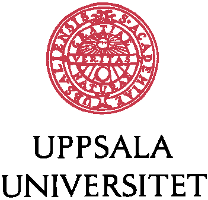
Uppsala University (UU) was founded in 1477 and is the oldest university in Scandinavia. Uppsala is already a national stronghold in genetics and Uppsala University recognizes the need for cutting-edge neuroscience and has pointed out this area in its strategic plan. The crossover of powerful genetic methods to a defined area of neuroscience research generates a unique collaborative platform. The thematic research area “Neuronal networks and plasticity” was established in 2006 at the Department of Neuroscience, UU, with the aim to establish a clear research profile recognized internationally and nationally and to promote cross departmental projects with high potential. The neuronal networks and plasticity program is located at the Biomedical Centre, one of Europe’s largest physical research complexes, and the closely located Academic hospital in an exceptionally vibrant and active environment. The educational and scientific content of the program is centered on how neuronal networks operate. The long-term objective is to unravel the cellular and molecular mechanisms that underlie the formation and function of neural circuits and to understand the mechanism and potential of plasticity within neuronal circuits.
- Université de Bretagne Occidentale
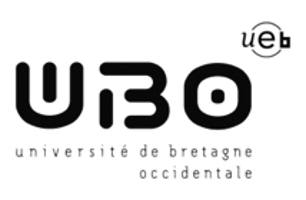
The French National Institute of Health and Medical Research (INSERM) unit UMR1101 is developing multidisciplinary research in association with the Faculty of Medicine of the Université de Bretagne Occidentale, the University Hospital Centre in Brest and the Advanced National School of Telecommunications in Brittany within a close partnership. One of the major axis of development concern the use of quantitave multimodality imaging within the context of guiding both interventional and non-interventional therapies. More specifically projects are oriented on (i). correction methodologies enhancing the quantitative accuracy of multimodality images (scatter, partial volume, physiological motion), (ii). image analysis tools that allow within a multimodal framework the extraction of image derived parameters for the construction of predictive and prognostic models, (iii). Monte Carlo simulation for multimodality imaging and radiotherapy treatment planning dosimetry, (iv). hardware and software based image reconstruction acceleration techniques. With respect to these subjects, LaTIM has developed regional, national, and international collaboration networks which facilitates working with the best partners in each of the fields concerned. Methodological research is extended by the integration, evaluation and validation of their results within technological clinical research platforms and by the preparation of industrial transfer operations. The group has a number of industrial based contracts with major imaging equipment manufactures, such as GE Healthcare and SIEMENS (in the field of emission tomography) and VARIAN (in the field of image guided radiotherapy). In addition, LaTIM also coordinates and participates in a number of national infrastructure projects (hGATE: hgate.univ-brest.fr, France Life Imaging, LaBEX Cominlabs http://www.cominlabs.ueb.eu, LaBEX CAMI: cami-labex.fr) and EU projects (MEDIATE EU/ITEA, COST TD1007: pet-mri.eu).
- Sapienza University

Sapienza University of Rome (Uniroma1) is one of the largest public multidisciplinary research organisations in Europe. Its mission is to contribute to the development of the knowledge society through research, training and quality of excellence and international cooperation. It has a staff of more than 19,000 employees among these about 4,000 are permanent researchers that promote national and international collaboration with public and private SME companies. It has considerable experience in both participating and managing research projects. Under the 6th Framework Programme has signed several actions and, until now under the 7th FP it take part on more than 140 projects. Molecular Medicine department which participates in the MindView Project is a multidisciplinary department enrolled in the biomedical research with particular attention to the molecular behaviour. With the aim to identify new diagnostic and therapeutic approaches for diseases of high impact on health, it was involved in several projects under the 7th FP. In this department, the Medical Physics Detector group has matured 30 years of experience in the development of new system for bio-medical imaging. During this period, several detectors were realized for clinical and pre-clinical applications, and many publications and conference participations were obtained. As example, the Group has developed the first gamma camera dedicated to breast imaging, and some other small pre-clinical imaging detectors for X and gamma ray applications.
- Noras
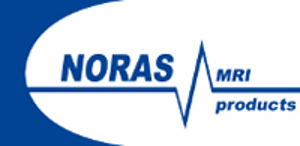
Noras has been internationally successful in the field of MRI for more than 25 years. Our solid reputation is based on the high-quality products and the customer-oriented service we provide. We are a competent partner for the planning and realization of your individual ideas and concepts. You can profit from our company’s philosophy: product development, production, certification and sales – all from a single partner. The products cover our core competences of MRI-guided breast biopsy (e.g. we produce a dedicated breast biopsy solution (MRI-coil & patient-rest & biopsy-mechanics) as an OEM Siemens product) and an iMRI neurosurgery solution (OR-Headholder and dedicated Headcoil for Siemens as well as Philips platforms). We also develop and produce several other dedicated MRI coils for all sorts of human applications in our in-house RF-laboratory. During our longtime activity in this field, we gained intensive knowledge of the MRI market, as well as the according product development and the special peculiarities in this environment. Through our customer oriented focusing (and the individual technical needs and requirements coming along), we were able to accrete in-depth experience with tackling challenges in the field of MRI coil development.
